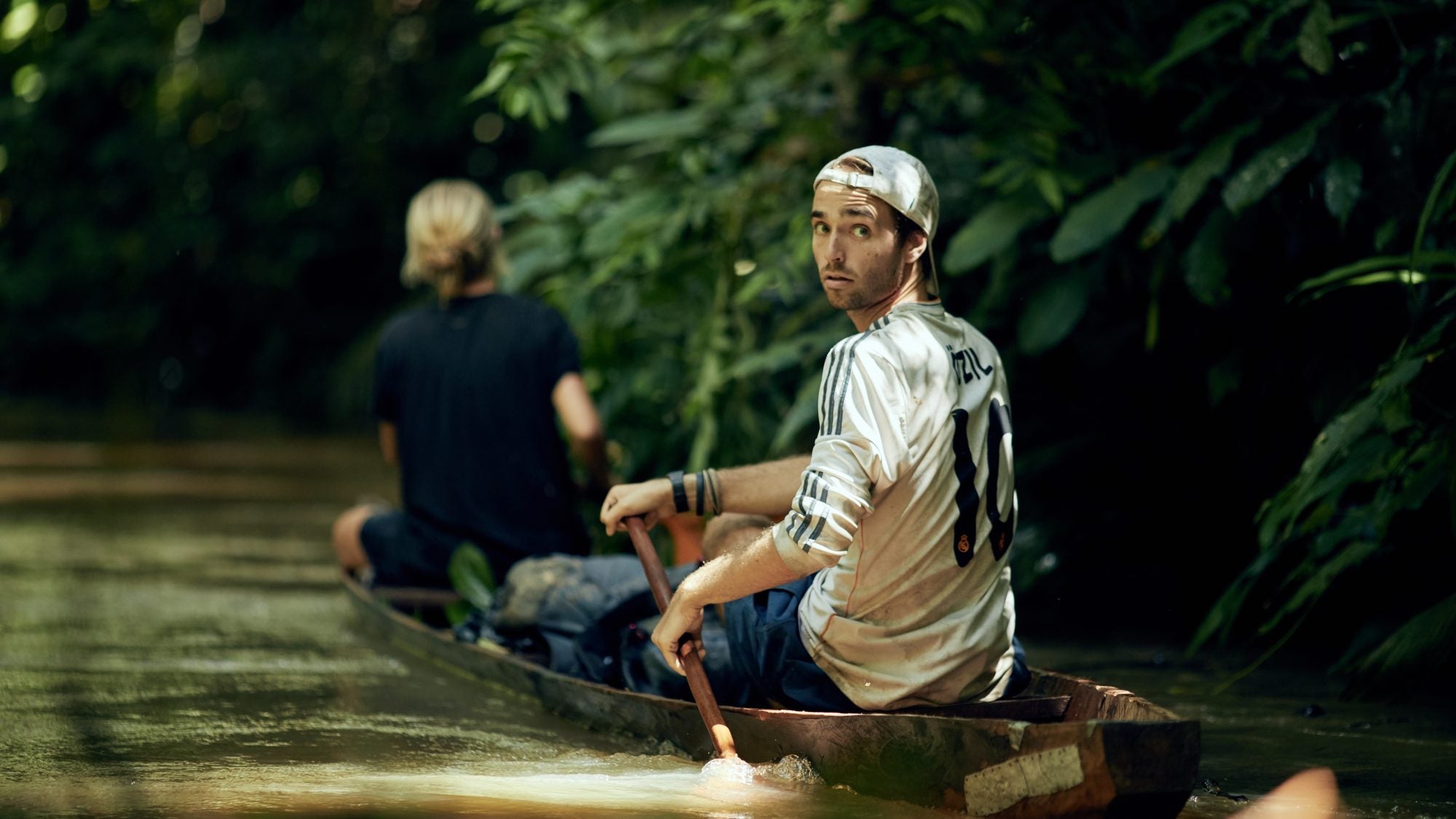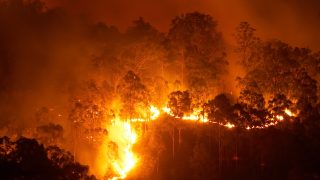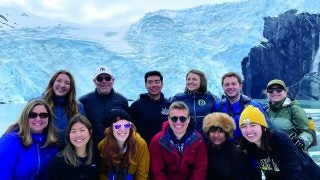For many people, creepy crawlies, venomous snakes and pitch-black darkness in the wilderness are not the ideal conditions for a summer getaway. For Brian Griffiths, it’s just another day of work in the jungle.
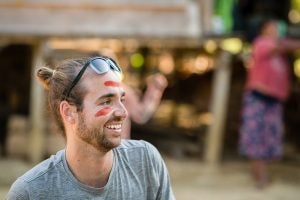
Griffiths, an assistant teaching professor in the Earth Commons, studies the ecology of large mammal species in the Peruvian Amazon and the sustainability of subsistence hunting. Since 2017, Griffiths has worked alongside the Maijuna, an Indigenous community in northeast Peru whose ancestral lands span nearly a million acres in the Amazon.
In July, Griffiths will lead a team of over 20 researchers, including three Georgetown students, on a multi-week expedition deep into the Amazonian jungle in conjunction with the Amazon Center for Environmental Education and Research, OnePlanet, the Detroit Zoological Society and the Maijuna Federation.
In the field, the students will trek out into the wilderness each day alongside the Maijuna to set up cameras to record wildlife activity. The cameras can capture anything from jaguars to giant anteaters and tapirs.
Recording footage for months at a time, the cameras will enable Griffiths to measure how much of the habitat is occupied by a particular species. Griffiths hopes the data will support his hypothesis that Indigenous hunting in the area, a key source of food for the Maijuna, is sustainable.
In his research, Griffiths stresses the importance of ethical conservation and tells his students that their work should be driven by the needs and interests of the Maijuna. As part of this project, he also hopes that demonstrating the sustainability of the area’s ecosystem will help in efforts to halt a controversial and major infrastructure project that will run through Maijuna lands.
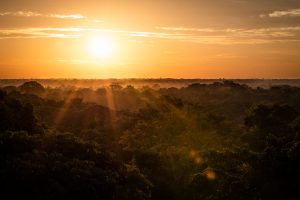
A seasoned veteran who has ventured into the Amazon many times over his career, Griffiths knows that the journey will not be easy and will push his students out of their comfort zone.
“Their purpose in the program is not as students. They are conservation professionals, and they need to come in with the confidence and knowledge to be able to execute that mission.” Griffiths said. “You forget that this is one of the last wild places on planet Earth, and we are on the front lines of conservation making sure that it stays that way.”
Setting out with a map and backpacking essentials, the students will venture miles into the jungle, paddling in rickety canoes and wading through swamps. If this adventure is anything similar to Griffiths’ previous research trips, the students may encounter some of the world’s deadliest snakes, jaguars and other dangerous wildlife. At the same time, the students can expect to witness the natural beauty of the rainforest while living and learning alongside an Indigenous community who have a way of life students have never experienced before.
“The opportunity to witness and learn from the Maijuna community firsthand is an extraordinary privilege. At the same time, I cannot deny that I feel a sense of nervousness. This expedition is unlike anything I’ve done before,” said Mae Gleeson (G’23), one of the students joining Griffiths on the research expedition. “The Amazon is an awe-inspiring but challenging environment, and I’m expecting it to be very physically demanding while also incredibly intellectually stimulating.”
Before setting off on his latest adventure, Griffiths outlined five of the most important things you need to know before venturing off into the jungle.
1. Essential Supplies
With just a backpack to not only live three weeks in the jungle but also perform critical conservation work, the students need to be prepared for anything they may encounter. Griffiths outlined a few of the essential items needed before embarking on an adventure in the Amazon.
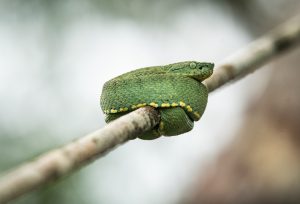
Snakes are lurking everywhere in the Amazonian jungle, including multiple venomous species of snakes and the world’s largest species of viper. That’s why Griffiths recommends bringing a good pair of thick rubber boots that can not only insulate body heat, but also deflect snake strikes and hide your scent from the slithering reptiles.
Students will also have to navigate the jungle’s sprawling network of rivers, creeks and swamps, which often means riding in cramped wooden boats. For a small dose of comfort, Griffiths urges his students to bring a camping chair.
“You can imagine you’re sitting in the bottom of this wooden boat. It’s dumping rain. It’s freezing cold. The wind’s blowing. Your knees are aching. You’re covered in ants and mosquito bites, and it’s just a miserable experience,” Griffiths said. “The Crazy Creek camping chair alleviates only a small portion of that. It doesn’t look comfortable, but it’s very good.”
The final thing Griffiths recommends is a headlamp and sharp knife to navigate in the darkness and fix equipment. While students will get an early start every morning, Griffiths teaches them to always be prepared and adaptable in case they have to navigate back to camp in the dark.
2. Self-Care and Communication
While most people would naturally fear the deadly wildlife in the jungle, Griffiths notes how wildlife encounters are actually rare as many animals steer clear of human scent and noise.
In fact, Griffiths said the biggest risk people face in the Amazon is actually themselves.
“The biggest risks are that students are not taking care of themselves and may not realize that they’re not taking care of themselves until it’s too late,” Griffiths said. “If they’re exhausted, sleep deprived or dehydrated and their brains cannot process danger fast enough, then you have a really unsafe situation.”
Griffiths tells each of his students to communicate when they don’t feel well or have concerns in the field.
“I find that a lot of people attach shame to those feelings. They feel like maybe if their fitness was better they wouldn’t feel this way. Or maybe if they were mentally stronger they wouldn’t feel this way,” Griffiths said. “It’s all about normalizing these types of experiences and making sure that everybody knows that this is a place where we prioritize well-being as well as producing good science.”
3. Physical Preparation
Prior to departure, students need to make sure they’re up to the challenging physical task ahead of them. Without any trails to lead the way, a trek into the Amazon will require traversing the untamed wilderness, whether that’s wading through waist-deep bogs or trudging uphill through thick mud while avoiding trees with foot-long barbs.
“Over the course of the day, they might hike a total distance of only something like 12 kilometers. But the big issue is that we don’t know what’s on the 12-kilometer track,” Griffiths said. “There might be a swamp that’s three kilometers across, so there might be three kilometers of swimming.”
Griffiths recommends doing some extra cardio leading up to the trip and stresses the importance of eating three full meals a day. He reassures his students that any weight they gain prior to the trip will likely be shed during three weeks of backpacking in the Amazon.
4. Cultural Awareness
In the field, students will travel with Maijuna guides who use local Spanish names for locations throughout the jungle. Griffiths requires each of his students to have a map that not only the students can use but also that the Maijuna can understand.
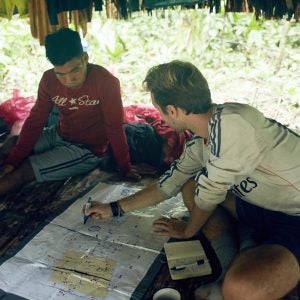
“The map acts as a kind of bridge between local traditional knowledge and scientific data,” Griffiths said. “It allows us to make sure that we are speaking the same language in terms of the landscape with the Maijuna.”
Students also need to have adequate language skills to be able to communicate with the Maijuna, who speak Spanish.
“If the Maijuna guide is saying, “Hey, there’s a loro machaco in front of you,” they have to know that’s a venomous species of snake and know what it looks like and understand that they’re in danger right now,” Griffiths said.
Alongside language skills, the students are required to complete training on the social and cultural norms of the Maijuna.
5. Humility
Recalling his first foray into the Amazon years ago, Griffiths admitted how he was overconfident in his ability to navigate life in the jungle. For newcomers to the Amazon, Griffiths cautions how easy it can be to lose sight of where you are and what you’re doing.
“You’re in the middle of nowhere. You’ve been hiking for three hours … You’re hot. You’re sweaty. You’re covered in 5,000 bites and stings,” Griffiths said. “Your mind goes numb to what you are experiencing, and the hours slip by when you’re like a robot. You’re just kind of going through the motions, like one foot in front of the other.”
Today, he urges all of his students to enter the experience with an open mind and ready to learn.
“People who are overconfident tend to get humbled quite quickly by the Amazon,” Griffiths said.
